 |
| One of my favorite charts illustrating the various hop additions |
One of my favorite things about a good IPA is the burst of citrus/pine aroma I get when I take a deep sniff. In brewing there are several time periods to add hops to the boil, each having it's own function. The classics are Bittering (over 60 minutes), Flavor (20-30 minutes), Aroma (0-5 minutes) and the mother of all aroma Dry Hopping.
Dry hopping is generally done in secondary fermentation and there is some logic behind this. The first bit is that active fermentation can be quite aggressive and literally eject a lot of the hop aroma out the airlock. The next bit has to do with maximizing the surface area of the hops exposed to the beer by eliminating anything that is not beer ie the left over yeast.
 |
| In line shot of dry hopping |
When it comes to dry hopping lengths opinions very depending on who you ask as it's a topic that is up for debate. Generally for warm fermented beers I prefer to keep the length of dry hopping to 1-2 weeks and for cold fermented beers a little longer 3-4 weeks. This is how I actually come up with the BIG IPL dry hopping scale. I was following the BIG IPA recipe and had dry hopped in secondary. The beer was a long way from being completed and I was nervous that if I left it on the dry hops for too long it would pick up some grassy flavor. I therefore decided to move it to a tertiary vessel with additional dry hops using hops I just happened to have left over from it's brewday.
Moving beer from one dry hop to the next is not so unique, for instance when Mike over at the Mad Fermentationist posted the recipe for his version of Pliny the Younger he included the dry hop schedule straight from Vinnie Cilurzo himself. Vinnie strongly believes in getting his hoppy beers off of the dry hops as soon as they have fulfilled their purpose and for Younger he dry hops a total for 4 times post primary.
DH 1 Simcoe, Amarillo, Centennial for one week and remove
DH 2 Amarillo, Centennial for one week and remove
DH 3 Simcoe for one week and remove
DH 4 Simcoe, Amarillo Dry Hop in Keg
 |
| The Ultimate Hop Chart by Zeke Shore Buy it at Hopschart.com |
When adding dry hops I prefer to put them in first and rack the beer on top of the hops. I have done it both ways and been please with both results. I've have occasionally been known to forget to add hops during the initial transfer and add them later. When brewing Costa del Sol I move the beer to secondary clean and only dry hop a week or two before I keg.
When selecting dry hops I look to the aroma descriptors via Hop Union or other online sources. I will admit that I was much more experimental when I first started brewing and played around with a lot of different hops. These days I know what I like and have really narrowed my hop varieties down to a handful, especially when it comes to dry hopping. My favorite hops to dry hop with are all pretty classic dry hopping hops. Amarillo (apricots and peaches), Cascade (floral and citrus), Centennial (fruity), Columbus (dank, onion, garlic, spice), Citra (passion fruit, grapefruit) and Simcoe (pine). I think Amarillo and Simcoe make an outstanding pair not only in dry hopping but throughout the process. Citra is another excellent aroma hop that goes great in IPA, I've not had luck in pairing it with Simcoe but it's a good partner for Cascade, Centennial, Columbus and Summit.
One thing to look at when brewing a big hoppy beer is the Cohumulone (one of the two primary alpha acids in hops). Low Cohumulone levels in a hop leads to a more smooth bittering.
I'll reiterate something I mentioned in a previous post on secondary and tertiary
transfers. Prior to transferring I flush the carboy with CO2 from my keezer
prior to filling it. This is especially important when it comes to hoppy beers as the CO2 flush reduces oxidation preserving a fresher hop character.
Cheers
-SNB
Pictures of Transferring
Scott's BIG IPL
Scott's BIG IPL
to Secondary and Tertiary
Secondary
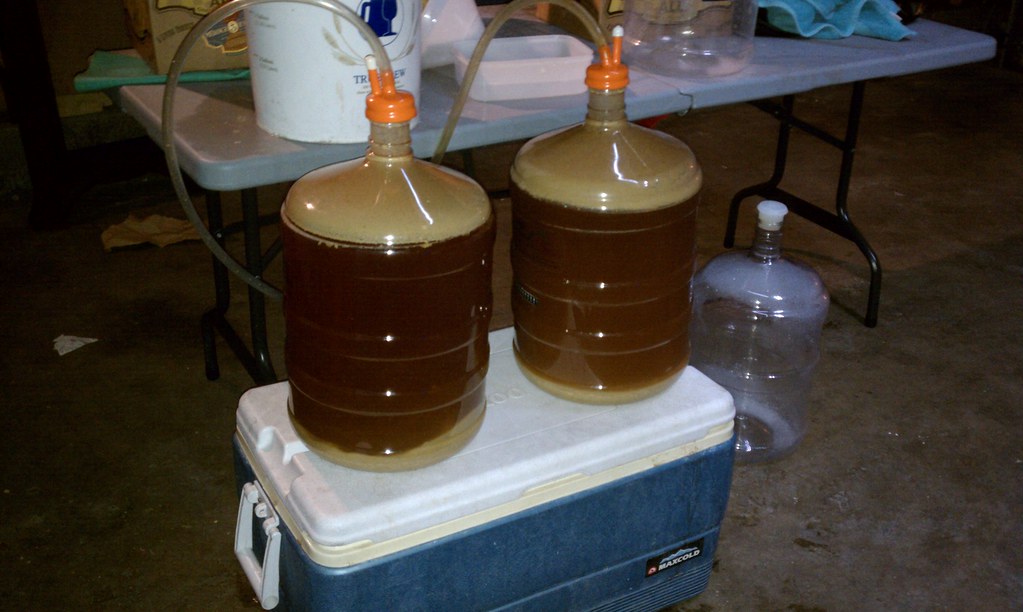 |
| IPLs waiting for transfer |
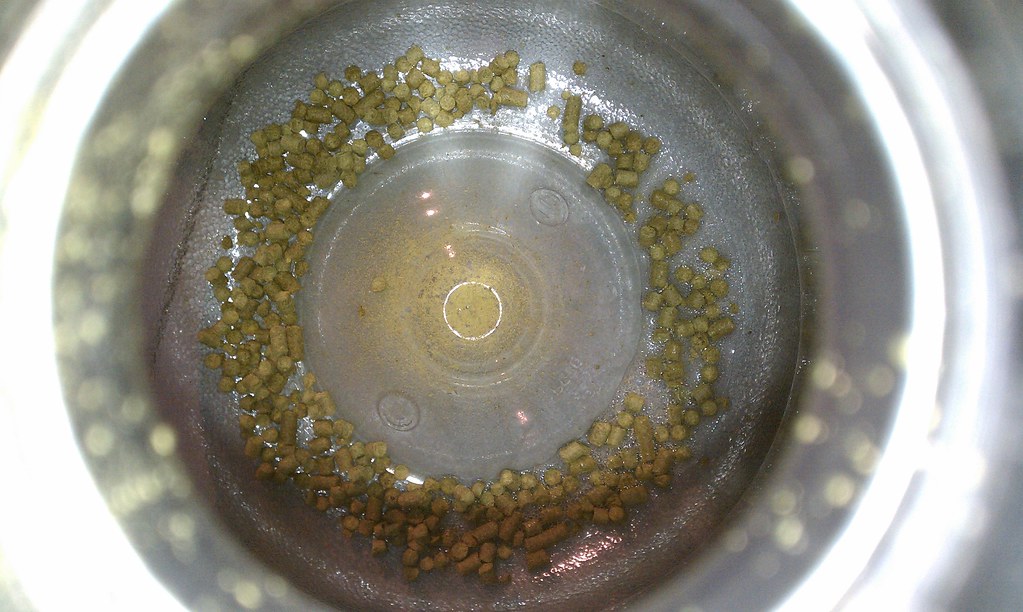 |
| Dry hops added |
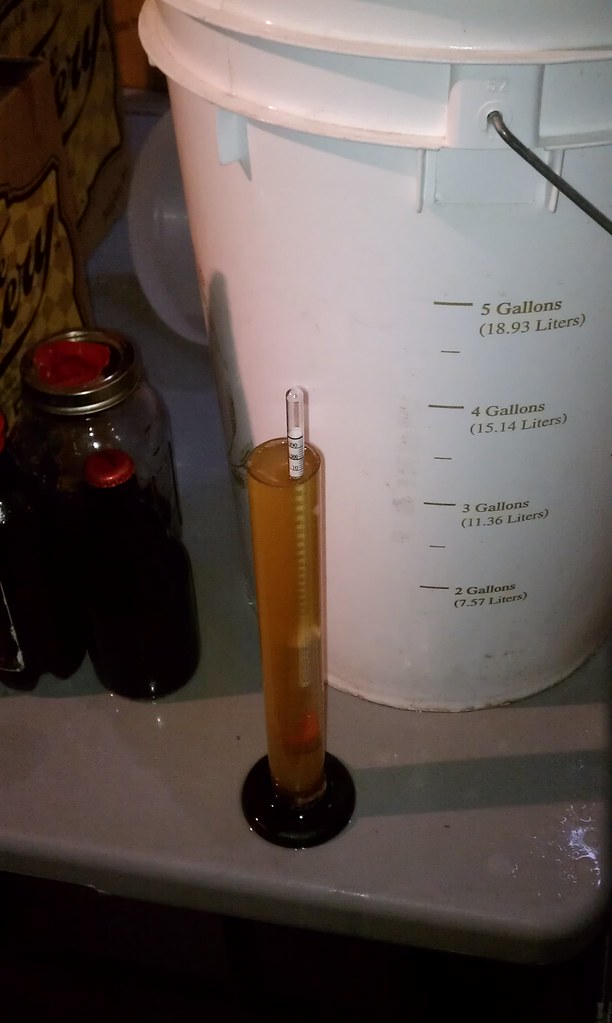 |
| Gravity measured on the right track |
 |
| Transferring to Secondary |
 |
| Resting |
Tertiary
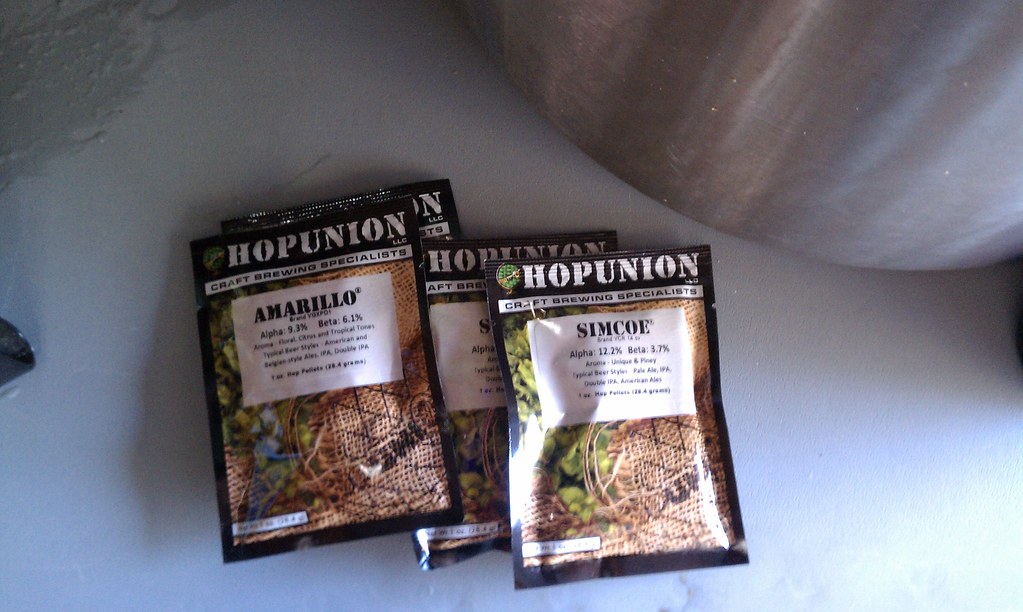 |
| The 1 oz Hop Union package is great for dry hopping |
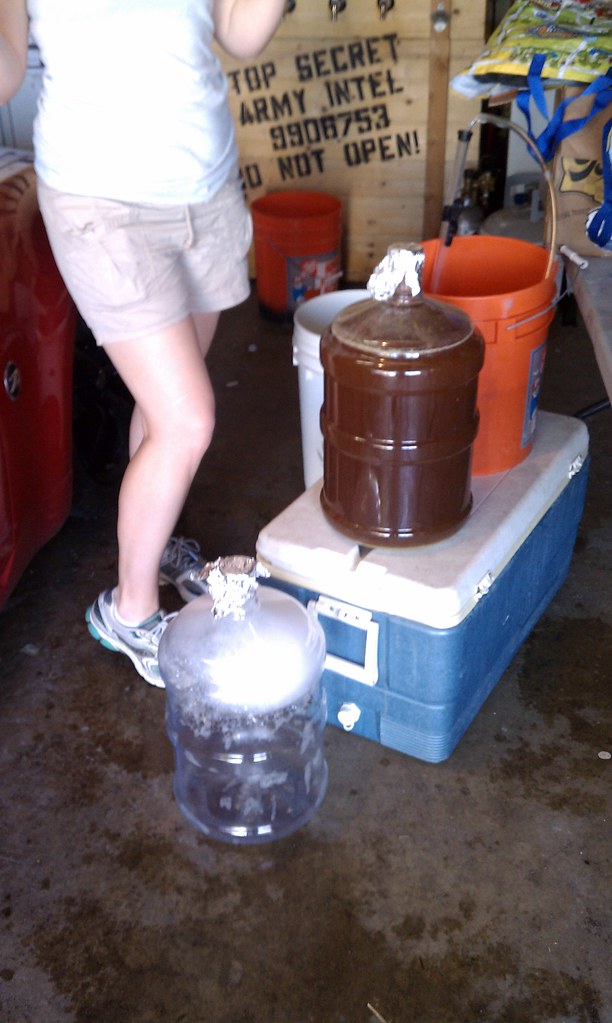 |
| Getting great to dry hop |
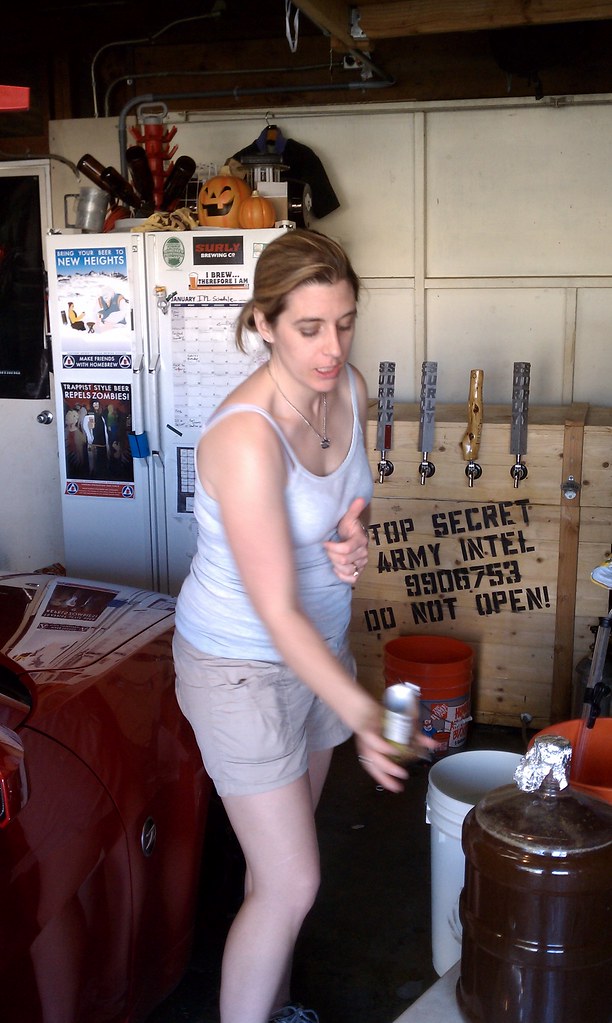 |
| Bonnie getting ready to do her first dry hopping |
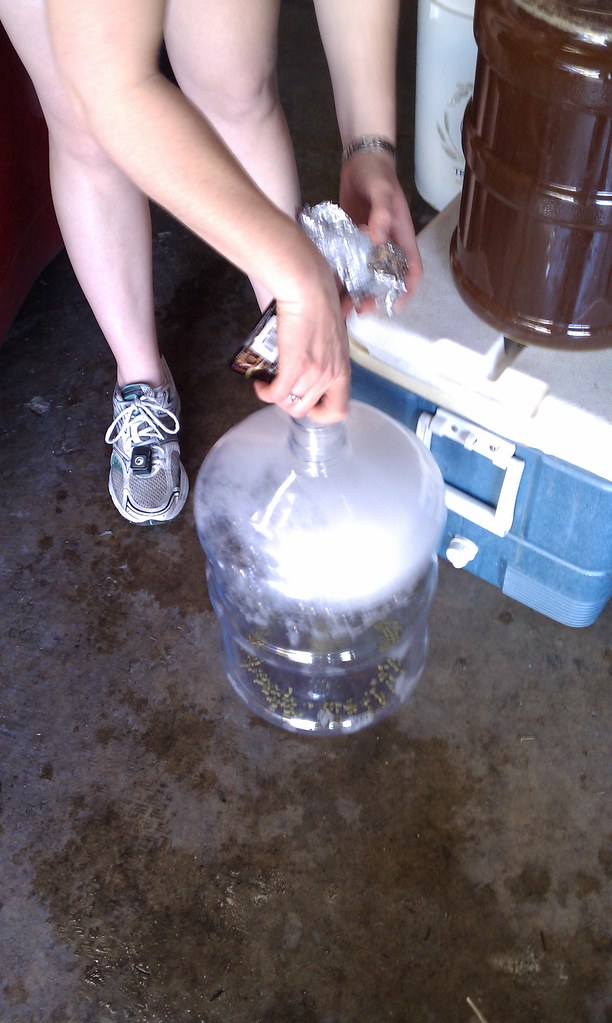 |
| Adding the dry hops |
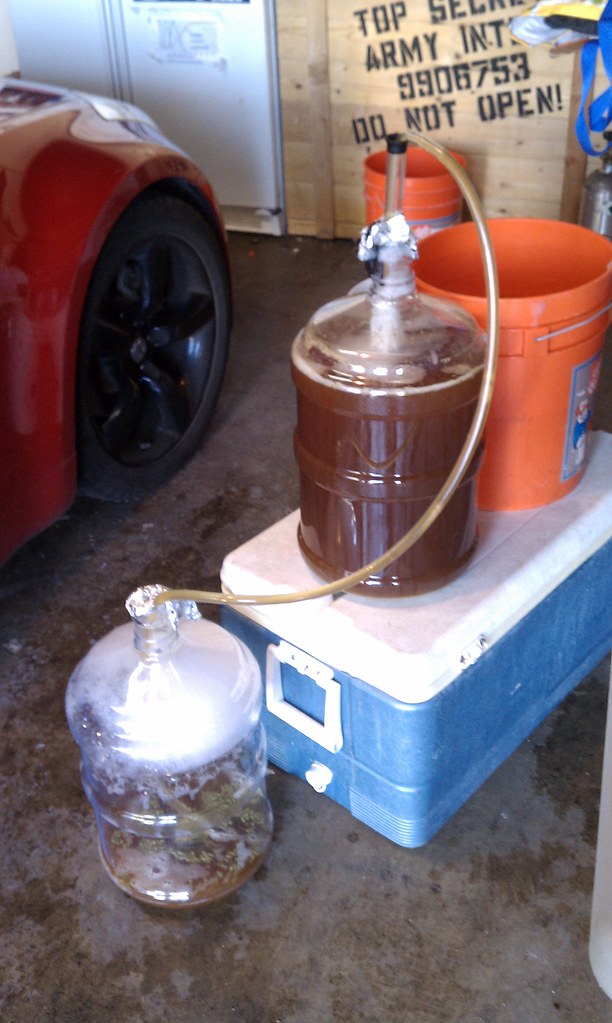 |
| Transferring to Tertiary |

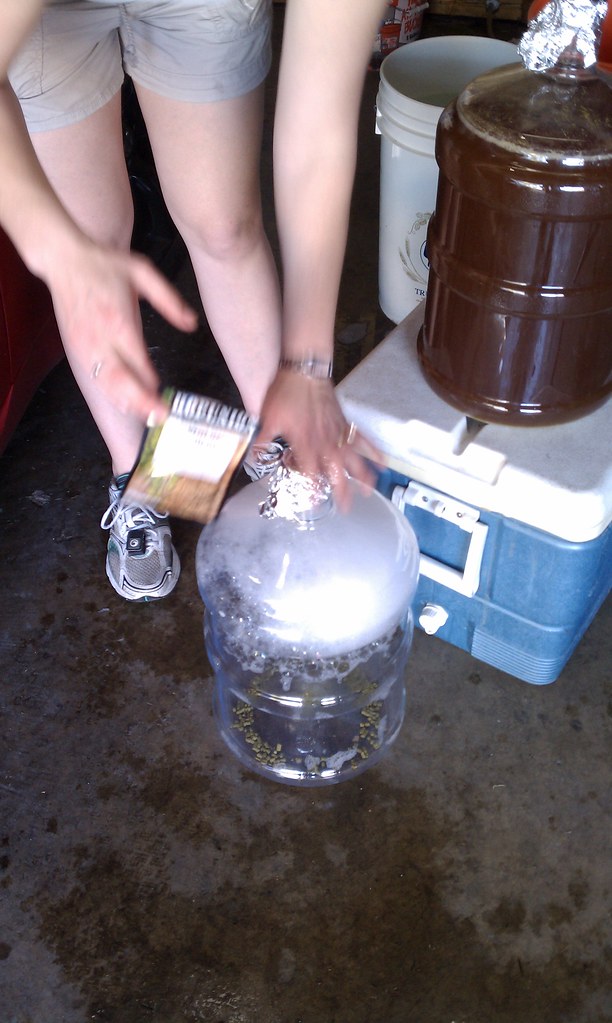
Great post, and nice to see Mrs. SNB in the blog.
ReplyDeleteI had a really nice shot of Mrs. SNB adding hops but I wisely decided not to include. :)
ReplyDeleteI had a question on how I flush the carboy with CO2.
ReplyDeleteI have a quick disconnect on one of my airlines that I unscrew, I then wipe the line clean with a bleach wipe, next I *sanitize* entire line and finally put the line in the carboy to flush it out (CO2 is heavier then O2). I do the same when kegging hoppy beers.